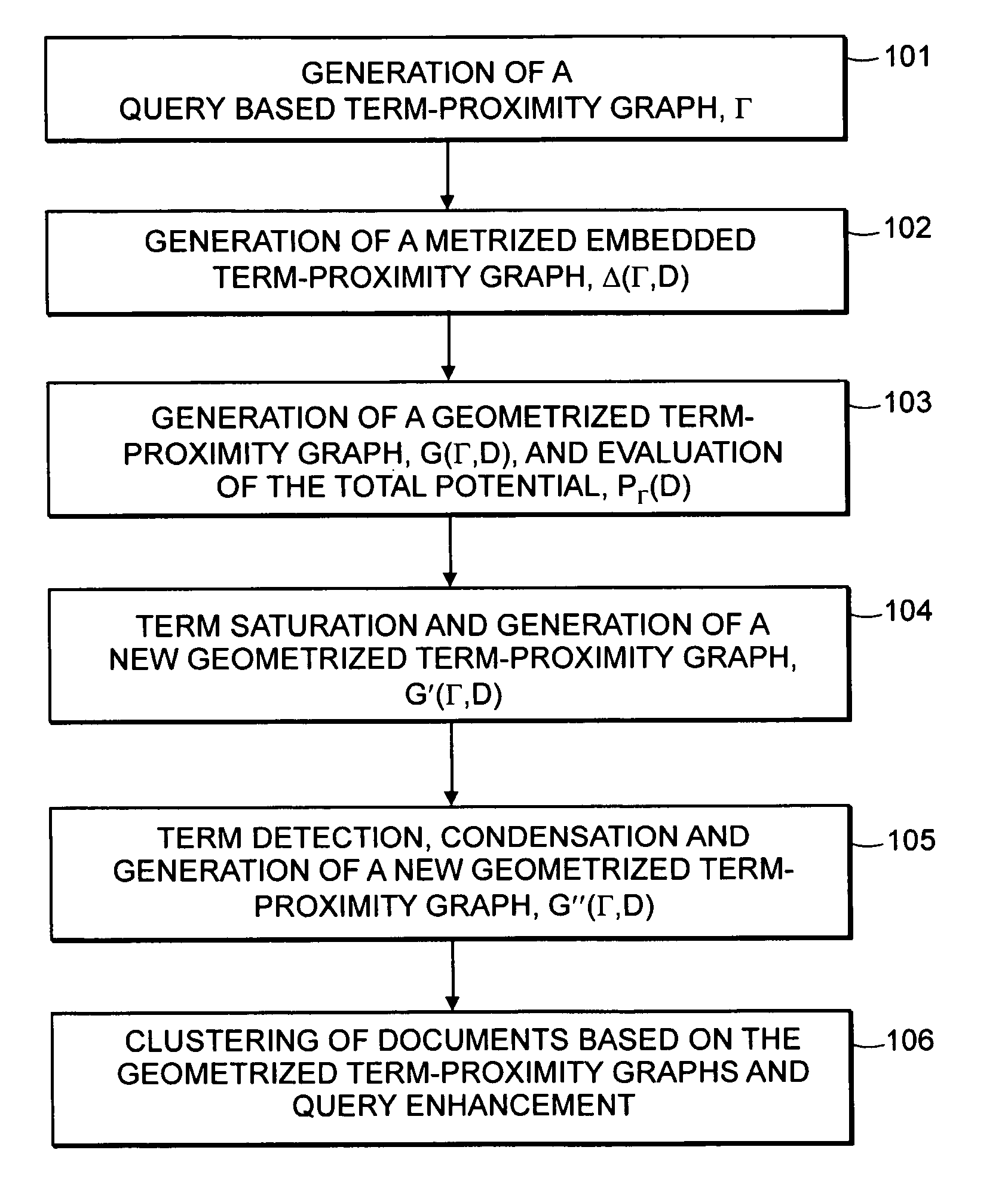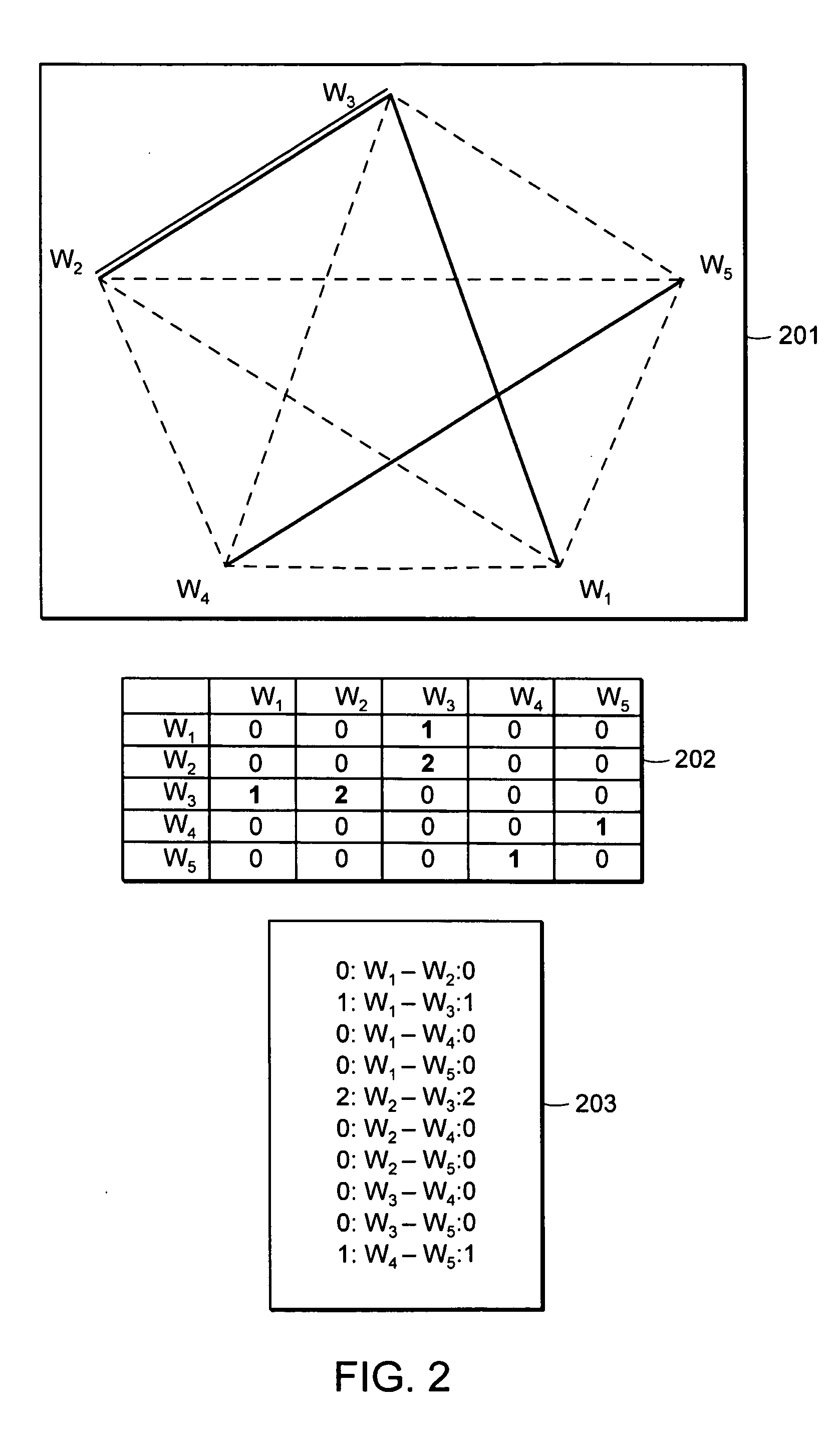Method and apparatus for informational processing based on creation of term-proximity graphs and their embeddings into informational units
a technology of informational units and graphs, applied in the direction of electric digital data processing, instruments, computing, etc., can solve the problems of null query, low efficiency of the above-mentioned technology of term extraction, and low value of related terms in the search refinement process
- Summary
- Abstract
- Description
- Claims
- Application Information
AI Technical Summary
Benefits of technology
Problems solved by technology
Method used
Image
Examples
Embodiment Construction
[0029] The present invention features efficient processing of large document collections, ranking these documents based on relevancy, thematically clustering these documents, and, based on this, for construction of summaries of documents and their clusters, and for generation of enhanced and refined queries. According to one embodiment, a mathematical graph is created to represent the relevancy of, on the one hand, a document to a query or, on the other hand, a mutual relevancy of documents to one another with regard to a query, which may be a geometric term-proximity graph in one embodiment as described below, that, while providing and surpassing all of the advantages of existing methods for documents-processing, ranking, and clustering, at the same time bypasses all of the inconveniences and difficulties associated with the existing approaches.
[0030] According to one embodiment, relevancy contexts as represented by geometric patterns of term distribution in each document are esta...
PUM
 Login to View More
Login to View More Abstract
Description
Claims
Application Information
 Login to View More
Login to View More - R&D
- Intellectual Property
- Life Sciences
- Materials
- Tech Scout
- Unparalleled Data Quality
- Higher Quality Content
- 60% Fewer Hallucinations
Browse by: Latest US Patents, China's latest patents, Technical Efficacy Thesaurus, Application Domain, Technology Topic, Popular Technical Reports.
© 2025 PatSnap. All rights reserved.Legal|Privacy policy|Modern Slavery Act Transparency Statement|Sitemap|About US| Contact US: help@patsnap.com



